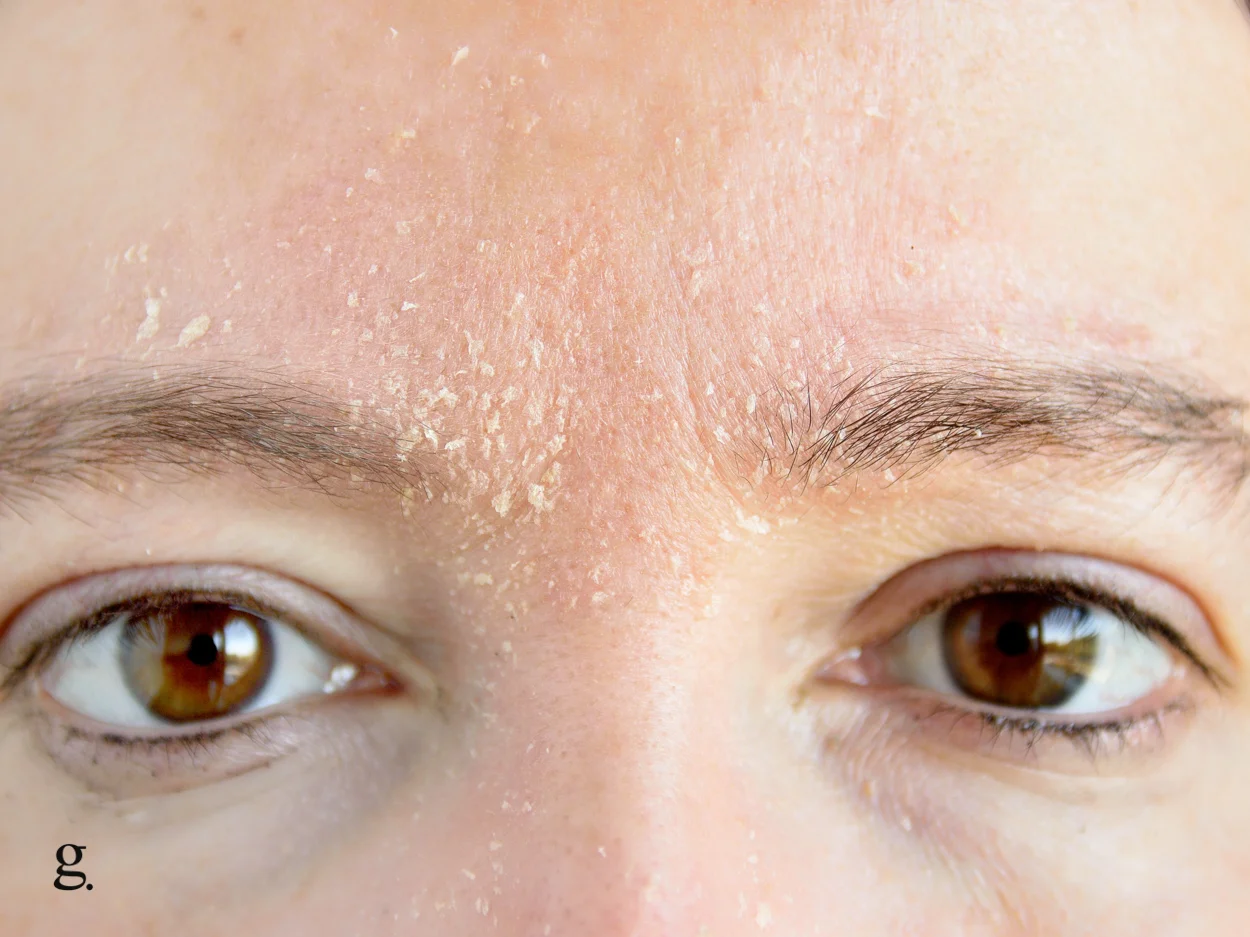Let’s face it, nobody wants to walk around with dead skin cells hanging onto their face like unwanted guests at a party. It’s all about achieving that glow, and the key to unlocking your skin’s true potential is learning how to remove dead skin from your face.
You might be wondering, “What’s the big deal?” Well, dead skin buildup can lead to dullness, clogged pores, and even breakouts. So, if you’re dreaming of a fresh and radiant complexion, it’s time to dive into the world of exfoliation and give your skin the TLC it deserves.
1. Exfoliation Products
Exfoliation is the MVP of any skincare routine when it comes to removing dead skin cells from your face. It’s the process of gently sloughing away those stubborn cells to reveal the fresh, bright skin hiding underneath. But wait, there’s more! Exfoliation isn’t a one-size-fits-all solution. In fact, there are two main types of exfoliation that you can choose from: physical and chemical. Let’s break it down, shall we?
Physical Exfoliation
Physical exfoliation involves using a scrub or a tool to manually remove dead skin cells. Think of it like giving your face a little massage with the added benefit of buffing away the old, dull skin. Some popular physical exfoliants include facial scrubs with small granules, brushes, and even exfoliating gloves. Remember, though, when it comes to physical exfoliation, less is more. Be gentle with your skin and avoid overdoing it, as this could lead to irritation or damage.
Chemical Exfoliation
If you’re looking for a more advanced method to say “buh-bye” to dead skin cells, chemical exfoliation is your best bet. Chemical exfoliants, like alpha-hydroxy acids (AHAs) and beta-hydroxy acids (BHAs), work by dissolving the bonds that hold dead skin cells together, making it easier for them to be washed away. Some examples of AHAs include glycolic acid and lactic acid, while salicylic acid is a popular BHA. Chemical exfoliants come in various forms, such as cleansers, toners, and serums. Just like with physical exfoliation, moderation is key. Start with a low concentration and gradually work your way up, always paying attention to how your skin reacts.
2. Facial Peels
A facial peel might sound like something straight out of a horror movie, but trust us, it’s not as scary as it seems. Facial peels are a type of chemical exfoliation that uses a potent blend of acids to dissolve the top layer of dead skin cells, revealing a smoother, more radiant complexion beneath. These treatments can also help improve the appearance of fine lines, uneven skin tone, and even acne scars. Talk about a win-win!
The Different Types of Facial Peels
Facial peels come in various strengths, from gentle at-home peels to more intense in-office treatments. Here’s a quick rundown:
- Light peels: These are your go-to for at-home exfoliation. Light peels often use milder concentrations of AHAs and BHAs, making them suitable for most skin types. They typically cause little to no downtime, so you can easily incorporate them into your skincare routine without any fuss.
- Medium peels: A step up from light peels, medium peels usually contain higher concentrations of acids and may require some downtime to allow your skin to recover. These peels are typically performed by a professional, like an esthetician or a dermatologist, and can provide more dramatic results.
- Deep peels: These are the heavy hitters in the world of facial peels. Deep peels use the strongest concentrations of acids and often require anesthesia and a longer recovery period. These treatments are best suited for those with severe skin concerns and should only be performed by a qualified professional.
Choosing the Right Peel for You
When it comes to facial peels, it’s essential to choose the right one for your skin type and concerns. If you’re new to the world of peels, start with a gentle at-home option and see how your skin responds. Always patch test before using a new product, and if you’re unsure which peel is right for you, consult with a skincare professional for personalized advice.
3. Hyaluronic Acid Treatments
Though not a direct way to remove dead skin cells, hyaluronic acid treatments can work wonders for your skin’s overall health and appearance. Hyaluronic acid is a naturally occurring substance in the body that’s known for its incredible ability to hold onto moisture—like, we’re talking about 1,000 times its weight in water! So, you might be asking yourself, “What does this have to do with dead skin?” Good question! By boosting your skin’s hydration levels, hyaluronic acid helps promote a healthy skin turnover rate, which in turn makes it easier to shed those dead skin cells.
Incorporating Hyaluronic Acid into Your Routine
To reap the benefits of hyaluronic acid, look for skincare products that contain this superstar ingredient, such as serums, creams, or even sheet masks. Apply these products after cleansing and before moisturizing to help lock in all that hydration. Just a heads up: hyaluronic acid works best when there’s moisture in the air, so if you live in a dry environment, consider using a humidifier or spritzing your face with a facial mist before applying your hyaluronic acid treatment.
4. Gentle Dry Brushing
Dry brushing isn’t just for your body, folks! When done gently and with the right tool, dry brushing can be a fantastic way to remove dead skin cells from your face without causing irritation. This method involves using a soft-bristled brush specifically designed for the face to gently whisk away dead skin cells and stimulate circulation. Bonus: dry brushing can also help reduce puffiness and give your skin a healthy glow.
How to Dry Brush Your Face
Ready to give dry brushing a try? Follow these simple steps to get started:
- Choose a brush: Look for a facial dry brush with soft, natural bristles. These brushes are designed for delicate facial skin, so they’re less likely to cause irritation than their body-brushing counterparts.
- Cleanse your face: Before you begin, make sure your face is clean and dry. Dry brushing is best done on dry skin, so skip any oils or serums before you start.
- Brush in gentle, upward strokes: Hold the brush with a light grip and use gentle, upward strokes to brush your face, starting at the center and moving outwards. Be extra gentle around the eye area and avoid brushing over any active breakouts or irritated skin.
- Clean your brush: After each use, clean your brush with mild soap and warm water, then let it air dry to keep those bristles in tip-top shape.
5. Ultrasonic Scrubbers
Welcome to the future of skincare, where technology meets exfoliation! Ultrasonic scrubbers, also known as skin spatulas, are handheld devices that use ultrasonic vibrations to remove dead skin cells, unclog pores, and even help your skincare products penetrate deeper. These nifty gadgets are a non-invasive and gentle way to give your skin a thorough cleanse and exfoliation without causing irritation.
How Do Ultrasonic Scrubbers Work?
Ultrasonic scrubbers work by emitting high-frequency sound waves, which create tiny vibrations on the surface of your skin. These vibrations help loosen dead skin cells, dirt, and oil, making it easier to wash them away. The result? A smoother, cleaner complexion with a healthy glow.
How to Use an Ultrasonic Scrubber
Ready to level up your exfoliation game with an ultrasonic scrubber? Here’s how to use one:
- Cleanse your face: Start with a clean canvas by washing your face with your regular cleanser.
- Wet your skin: Ultrasonic scrubbers work best on damp skin, so apply a thin layer of water, toner, or a water-based serum to your face before you begin.
- Turn on the scrubber: Power up your device and choose the appropriate setting, as recommended by the manufacturer. Some devices have multiple settings for different skin concerns, so be sure to read the instructions carefully.
- Glide the scrubber across your face: Hold the device at a 30-degree angle to your skin, and gently glide it across your face in an upward and outward motion. Pay extra attention to congested areas, like the nose and chin, but avoid using the device on sensitive or irritated skin.
- Clean and moisturize: Once you’re done, rinse your face with water, pat it dry, and follow up with your favorite moisturizer to lock in hydration.
Ultrasonic scrubbers are generally gentle enough to be used once or twice a week, depending on your skin type and sensitivity. As always, listen to your skin and adjust the frequency based on its response to the treatment. If you experience any irritation or discomfort, take a break and give your skin some time to recover.
6. Face Mask Treatments
Face masks are a skincare staple for a reason. These treatments provide a concentrated dose of ingredients that can help address a variety of skin concerns, including dead skin buildup. Face masks come in many different forms, from clay masks to sheet masks, so there’s a mask for every skin type and concern.
How Do Face Masks Work?
ace masks work by delivering a potent blend of ingredients directly to your skin, which can help improve its texture, hydration, and overall health. Masks that are formulated with exfoliating ingredients, like AHAs or enzymes, can help dissolve dead skin cells and unclog pores, while masks with hydrating ingredients, like hyaluronic acid or aloe vera, can help plump up and soothe dry or irritated skin.
Using Face Masks in Your Skincare Routine
Incorporating a face mask into your skincare routine is easy! Here’s how:
- Cleanse your face: Before you apply your mask, make sure your skin is clean and dry.
- Apply your mask: Using your fingertips or a brush, apply a thin, even layer of your chosen mask to your face, avoiding the eye area.
- Relax and let it work its magic: Depending on the type of mask, leave it on for the recommended amount of time, usually anywhere from 10 to 20 minutes.
- Rinse and moisturize: Once your mask is done, rinse it off with warm water and follow up with your favorite moisturizer to lock in hydration.
Choosing the Right Face Mask
With so many face masks to choose from, it can be tough to know where to start. Here are some tips to help you find the perfect mask for your skin:
- Know your skin type: Look for masks that are formulated for your skin type, whether it’s dry, oily, or combination.
- Check the ingredients: Look for masks that contain ingredients that address your specific skin concerns, like exfoliating acids for dead skin buildup or soothing ingredients for redness and irritation.
- Read reviews: Don’t be afraid to do your research! Read reviews and check out the ingredient list before you make a purchase.
Conclusion
Removing dead skin cells from your face is essential to achieving a healthy, radiant complexion. From exfoliation to hyaluronic acid treatments, facial peels to gentle dry brushing, and ultrasonic scrubbers to face masks, there are many ways to achieve your skin goals. Just remember to be gentle, start slow, and pay attention to your skin’s reaction.
With the right approach and a little patience, you can say goodbye to dead skin cells and hello to a glowing, healthy complexion.

